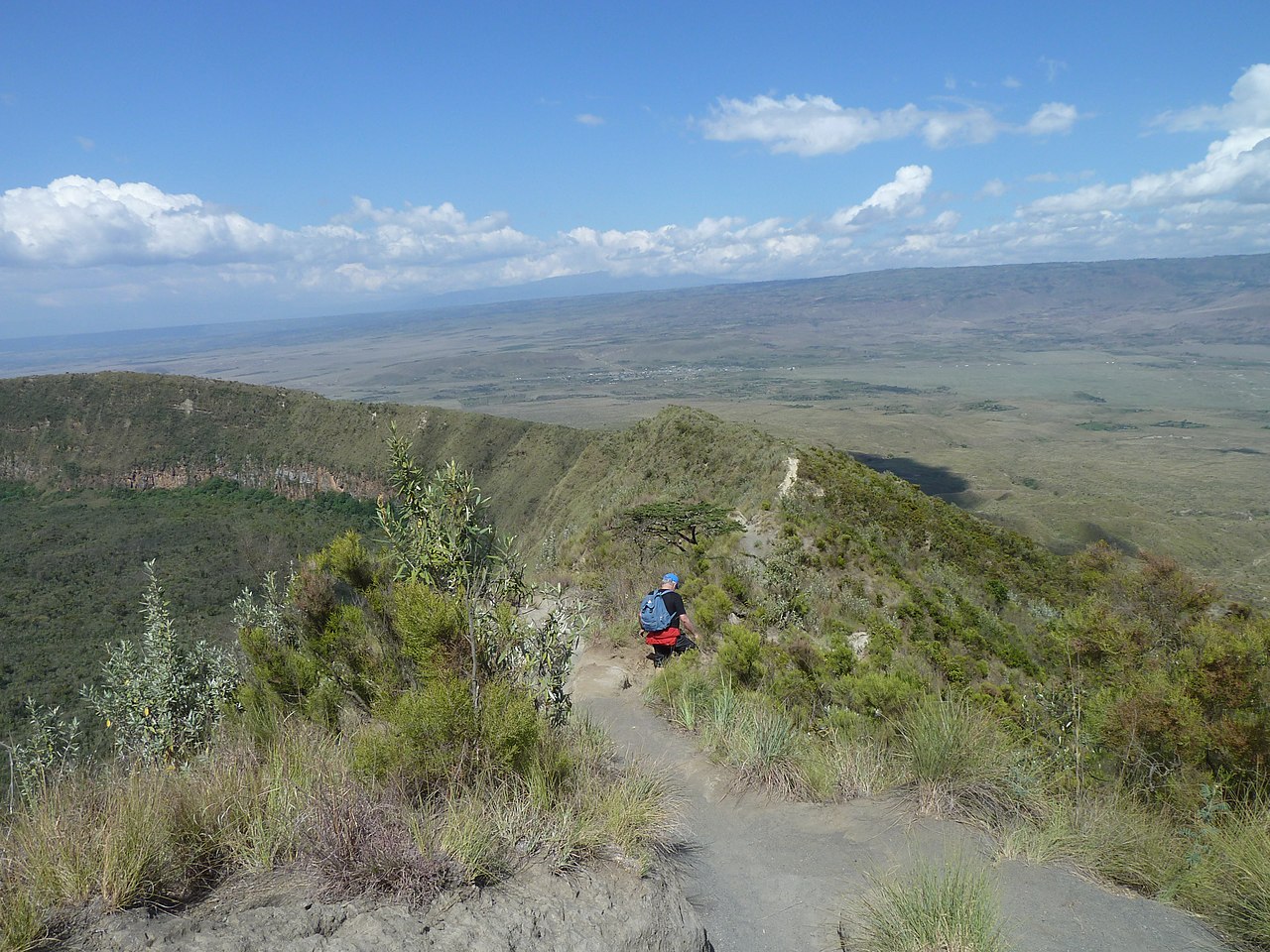Mount Longonot National Park
Mount Longonot National Park: Adventure Awaits in Kenya’s Rift Valley
Mount Longonot National Park, located about 60 kilometers northwest of Nairobi, is a captivating destination known for its stunning volcanic landscapes and outdoor adventures. Established in 1983, this 52-square-kilometer park is centered around the impressive Mount Longonot, an extinct stratovolcano that rises to 2,776 meters above sea level. The park’s unique geography, diverse ecosystems, and rich wildlife make it an ideal spot for hiking enthusiasts and nature lovers alike.
Hiking Adventures at Mount Longonot
The main attraction of Mount Longonot National Park is the exhilarating hike to the summit of Mount Longonot. The trek to the crater rim offers breathtaking views of the Great Rift Valley and the surrounding landscape, making it a rewarding experience for both novice and seasoned hikers. The hiking trail, which is approximately 13 kilometers round trip, takes about 4 to 5 hours to complete, depending on individual fitness levels.
As hikers ascend, they will encounter diverse vegetation, including lush montane forest and scrubland. The crater itself is a magnificent sight, featuring a variety of wildlife and scenic views of the inner crater walls. For those seeking a more challenging adventure, the hike around the crater rim offers additional stunning vistas and a chance to appreciate the unique geological features of the area.
Wildlife and Biodiversity
Despite its volcanic terrain, Mount Longonot National Park is home to a variety of wildlife, making it a great spot for nature enthusiasts. The park is inhabited by species such as giraffes, zebras, antelopes, and various birds. The open grasslands and acacia woodlands provide excellent habitats for these animals, allowing visitors the chance to observe them during their hike.
Birdwatchers will also delight in the park’s avian diversity, with over 100 bird species recorded. Some notable species include the African fish eagle, lilac-breasted roller, and various raptors that can be seen soaring above the volcanic landscapes.
Scenic Landscapes and Unique Geology
The landscapes of Mount Longonot National Park are a visual feast, characterized by the dramatic crater, expansive grasslands, and the stunning backdrop of the Great Rift Valley. The park’s unique geological features, formed by volcanic activity, add to its allure. The inner crater is a fascinating ecosystem, with various plant species and wildlife adapted to the specific conditions created by the volcano.
As visitors explore the park, they can take in panoramic views of the surrounding area, including nearby Lake Naivasha and the lush valleys that make up the Rift Valley. The combination of volcanic terrain and the vibrant natural environment creates a captivating setting for photography and exploration.
Conservation and Sustainability
Mount Longonot National Park plays an important role in the conservation of Kenya’s biodiversity. The park is actively managed to protect its unique ecosystems and the wildlife that inhabits them. Conservation efforts focus on habitat preservation, wildlife protection, and promoting sustainable tourism practices that benefit both the environment and local communities.
Visitors to the park contribute to these conservation efforts through entrance fees, which support park management and local development initiatives. By choosing to explore Mount Longonot, tourists are participating in the protection of this remarkable natural area for future generations.
Accessibility and Visitor Experience
Mount Longonot National Park is easily accessible from Nairobi, making it an excellent destination for a day trip or weekend getaway. The park is open year-round, and visitors can choose from various activities, including hiking, picnicking, and wildlife watching. Facilities within the park are basic, so visitors are encouraged to bring their own food, water, and hiking gear for a comfortable experience.
Guided hikes are also available, providing insights into the park’s ecosystems, wildlife, and the geology of Mount Longonot. Local guides offer valuable knowledge and enhance the overall experience by sharing stories and information about the area.
Best Time to Visit Mount Longonot National Park
The best time to visit Mount Longonot National Park is during the dry seasons, which occur from June to October and January to February. During these months, the weather is typically more favorable for hiking, with less rainfall and more stable trail conditions. The dry season also makes wildlife spotting easier, as animals are more active and visible.
The rainy seasons, from March to May and November to December, can still be enjoyable for those who appreciate the lush landscapes, but hiking trails may be slippery, and some areas may be less accessible.
Conclusion
Mount Longonot National Park offers a unique combination of adventure, stunning landscapes, and rich biodiversity, all within close proximity to Nairobi. From the exhilarating hike to the summit of Mount Longonot to the opportunity to observe diverse wildlife in their natural habitat, the park promises an unforgettable experience for nature lovers and adventure seekers. As a vital part of Kenya’s natural heritage, Mount Longonot invites visitors to explore its volcanic beauty while contributing to the conservation of this remarkable environment. Whether you’re an avid hiker or simply looking to enjoy the great outdoors, a visit to Mount Longonot National Park is sure to be a highlight of your Kenyan adventure.




Comments are closed